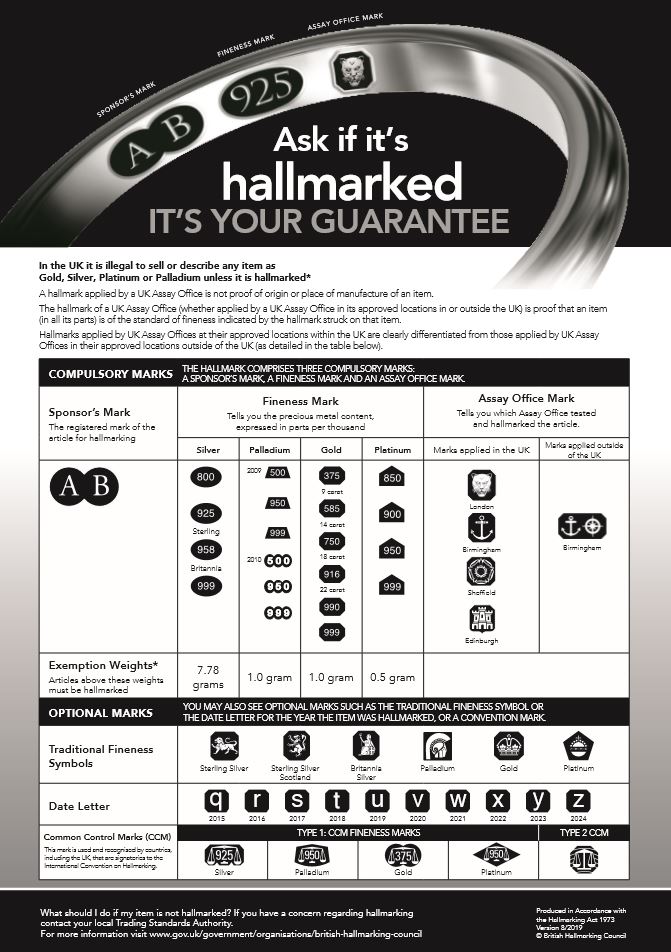
Silver standards refer to the standards of fineness for the silver alloy used in the manufacture or crafting of silver objects. This short European list is organized from highest to lowest fineness, or purity of the silver. Britannia and Sterling silver are probably the most sort after and collectable in the world, due to the quality British silversmiths and history that each item can provide.
Fine silver has a fineness of 999. Also called pure silver, or three nines fine, fine silver contains 99.9% silver, with the balance being trace amounts of impurities. This grade of silver is used to make bullion bars for international commodities trading and investment in silver. In the modern world, fine silver is understood to be too soft for general use.
Britannia silver has a fineness of at least 958. The alloy is 95.84% pure silver and 4.16 per cent copper or other metals. The Britannia standard was developed in Britain in 1697 to help prevent British sterling silver coins from being melted to make silver plate. It was obligatory in Britain between 1697 and 1720, when the sterling silver standard was restored. It became an optional standard thereafter.
Sterling silver has a fineness of 925. The sterling silver alloy is 92.5% pure silver and 7.5 per cent copper or other metals. This is used widely today in all kinds of silverware in Britain and was also used most often after 1720 when the obligatory Britannia fineness was relaxed.
French silver 1st standard has a fineness of 950. The French 1st alloy is 95% silver and 5 per cent copper or other metals.
German silver will be marked with a fineness of 800 or 835. Any items simply marked "German silver", "nickel silver" or "Alpaca" have no silver content at all, but are mere alloys of other metals.
United Kingdom Hallmark Guarantee ~ All our UK solid silver items carries these hallmarks
